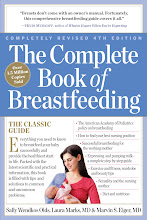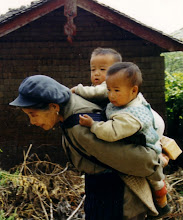As Susan Griffin wrote in “Eye of My Heart,” edited by Barbara Graham (more about this lovely book in a future post), “When you become a grandparent, you cannot escape the fact that you are older, soooo much older … and much closer to death.” You begin to realize that your time is limited.
As travelers in this stage of life, even as relatively young grandparents, we have much to gain from reading Jane Brody’s new book, subtitled “A Practical Primer to Help You and Your Loved Ones Prepare Medically, Legally, and Emotionally for the End of Life,” published by Random House. Brody, a popular New York Times health writer and a grandmother of four, has plunged into a topic most of us don’t want to talk about, read about, or think about – but which is crucially important.
As she writes, “Even the healthiest of lives must come to an end. In this book I hope to help my readers make that end – for themselves and for those they love – as peaceful and, yes, as enjoyable as it can be.”
The book covers virtually everything you could think of to this goal, including the intricacies of preparing an advance directive and the limitations of the living wills most of us think will honor our wishes. It emphasizes the need to talk with family members, including healthy young adults, to state clearly what measures you and they would want in case of debilitating illness or injury. The long-drawn-out court battles over comatose patients like Karen Ann Quinlan and Terri Schiavo prompted some 59 million Americans to fill out living wills, and the recent tragic injury of Natasha Richardson illustrates the necessity for family members of any age to tell each other what they would want in such devastating circumstances.
Some of the other issues covered include dealing with a grim prognosis, taking care of someone with a terminal illness, relieving pain, and making a person near the end of life as comfortable as possible. Brody also faces controversial topics like assisted dying and the all-too-common situation of doctors abandoning terminally ill patients when they feel they can do nothing else. The book is easy to read and down to earth. The list of tactless comments to the recently bereaved verges on the ridiculous, like the person who asked a woman whose husband had committed suicide, “Are you going to get a dog now?” Of course, a following section offers suggestions for helpful things to say and do. Throughout the book, a wide range of books are recommended for further help. In this section my favorite title is “Don’t Ask for the Dead Man’s Golf Clubs: Advice for Friends When Someone Dies.” (Can you believe this is based on a real request??)
Despite the gravity of the issues in the book, there’s humor too, partly through the cartoons sprinkled throughout. My favorite is the one with one woman telling another “I’d like to be buried in this outfit, if I can lose ten pounds.”
Both my husband and I have read through this well researched and practical book, have resolved to act upon some of the recommended measures (like revisiting our own living wills), and will be keeping it handy as a reference for the years ahead.
Glitter Leaves
3 months ago



















.jpg)





.jpg)
.jpg)
.jpg)
.jpg)




.jpg)






.jpg)
No comments:
Post a Comment